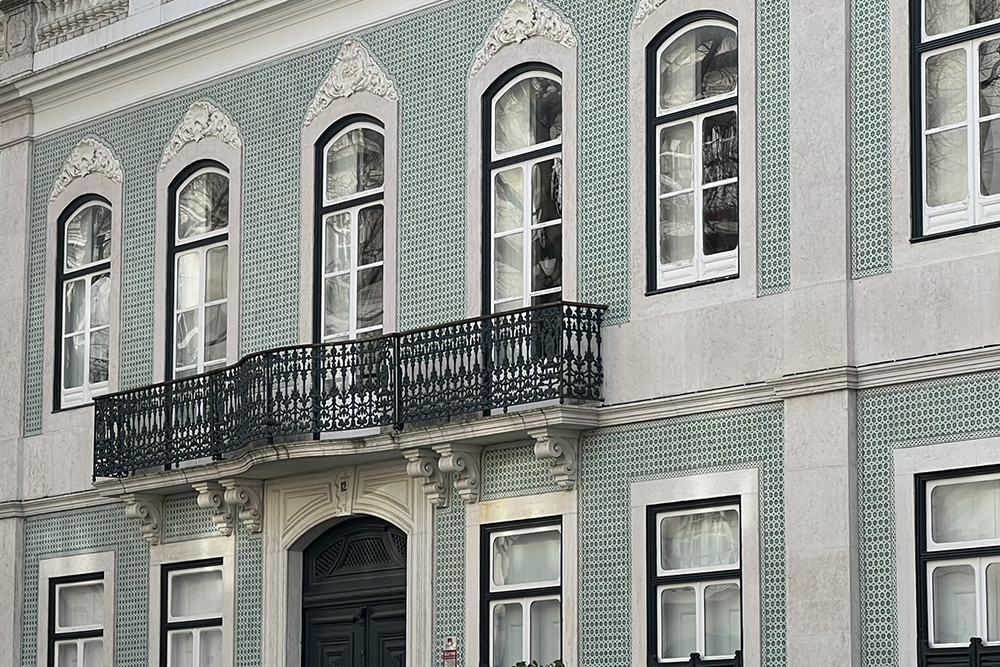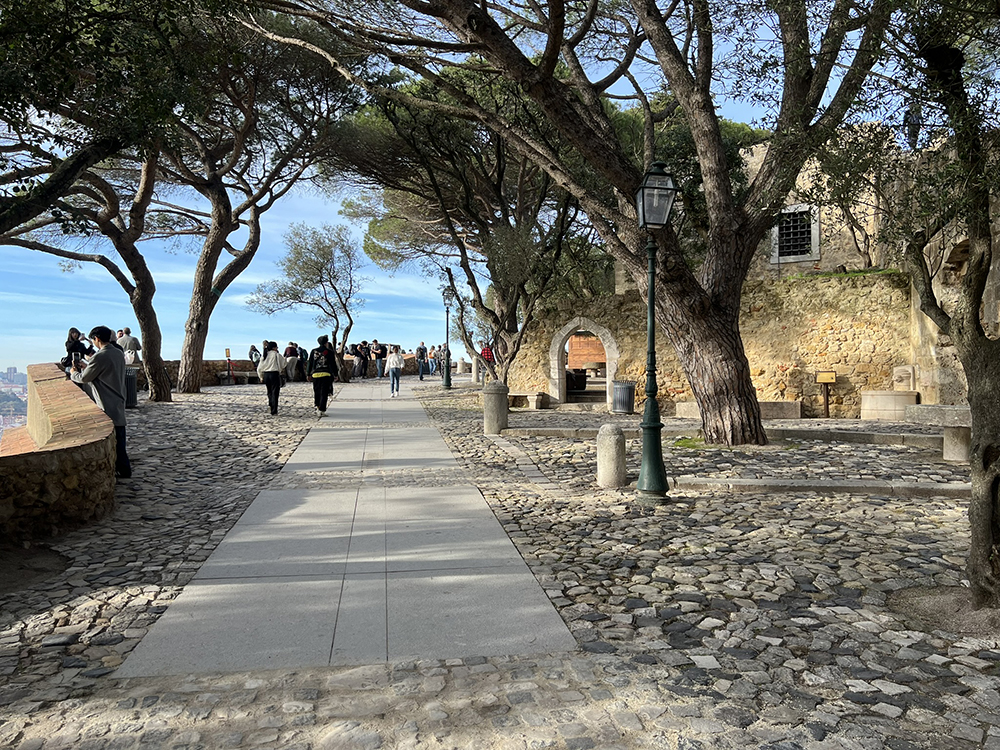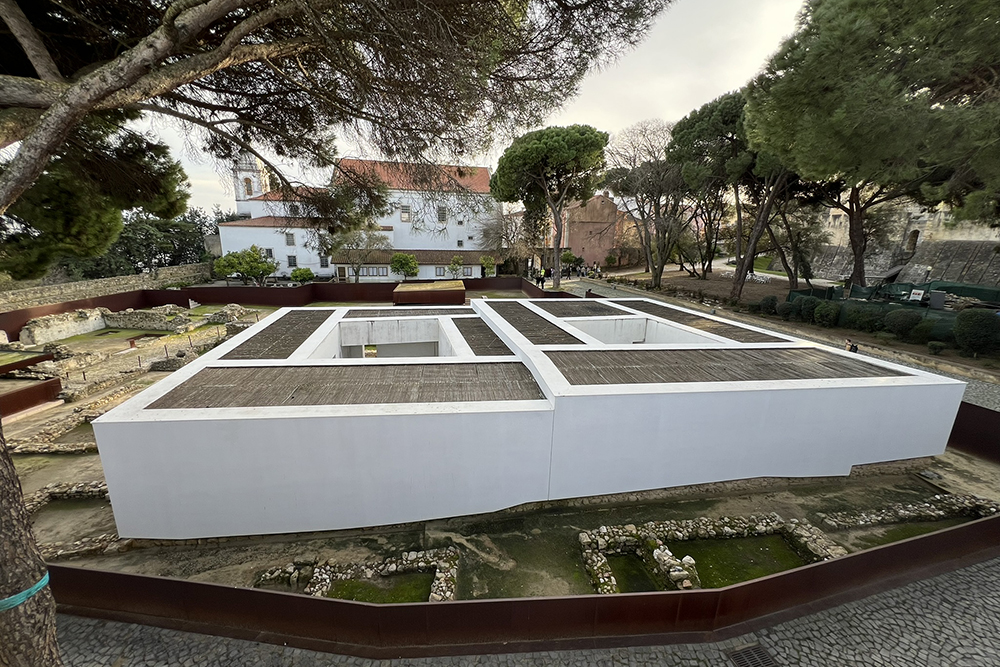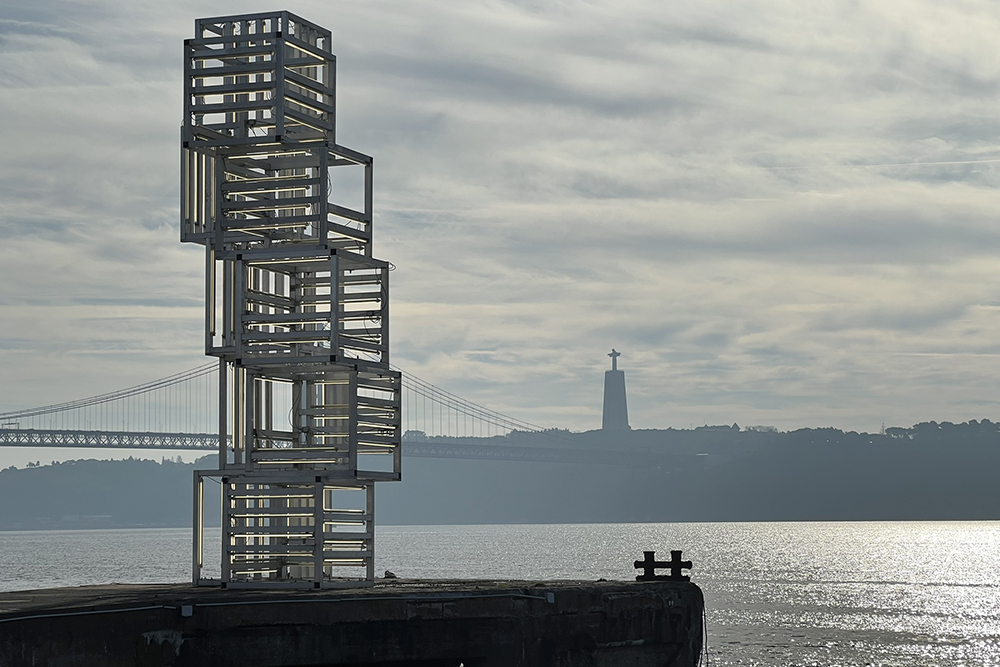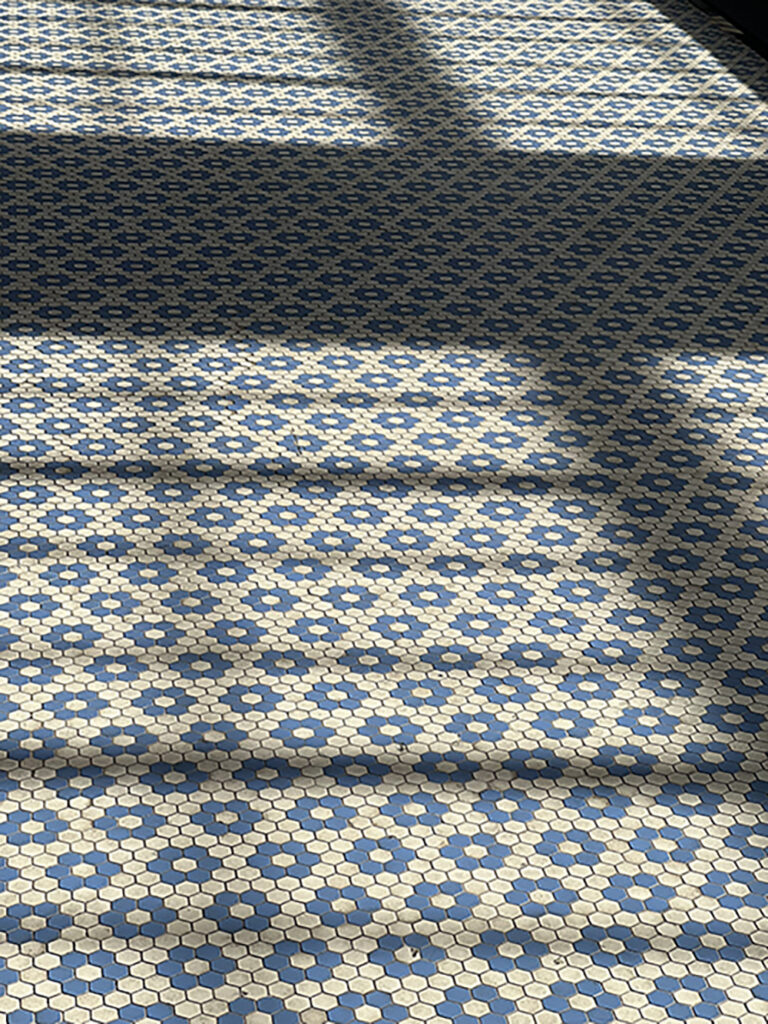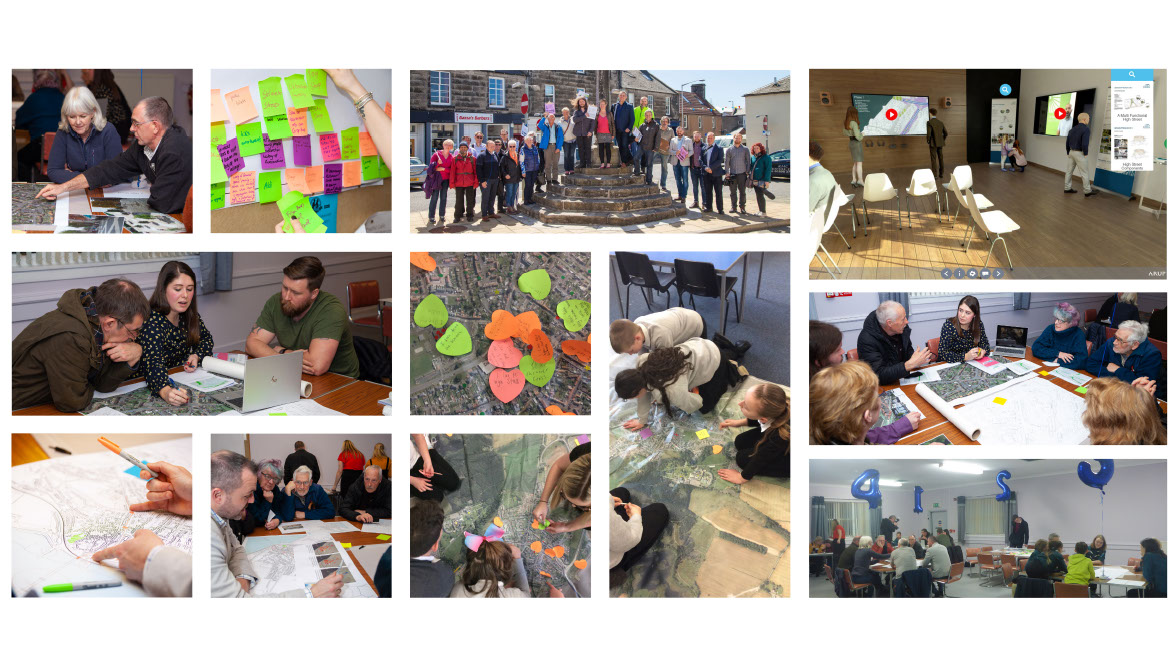Learning in Lisbon

Design for Public Spaces study tour of Lisbon with Edinburgh Napier University
Design for Public Spaces study tour of Lisbon with Edinburgh Napier University
Since 2021 Mike has been leading a Design for Public Spaces module on the Spatial Design course at Edinburgh Napier University. It is a trimester long course for the third year students, where they are set a brief to propose, design and detail an intervention into an existing public space. Cities of study have been Glasgow and Copenhagen with George Square given a makeover in 2022. We are all following the real-world proposals from McAslan and Partners with interest. This year the public space of study is the Carmo Terraces in Lisbon, recently renovated by the Portuguese Architect Álvaro Siza Vieira in 2016. A series of interlinked spaces/terraces with fantastic city views, the architect proposals sought to connect the neighbourhood of Chiado with the Carmo Convent, a 14th century ruined monastery dominating the westward skyline of Lisbon.
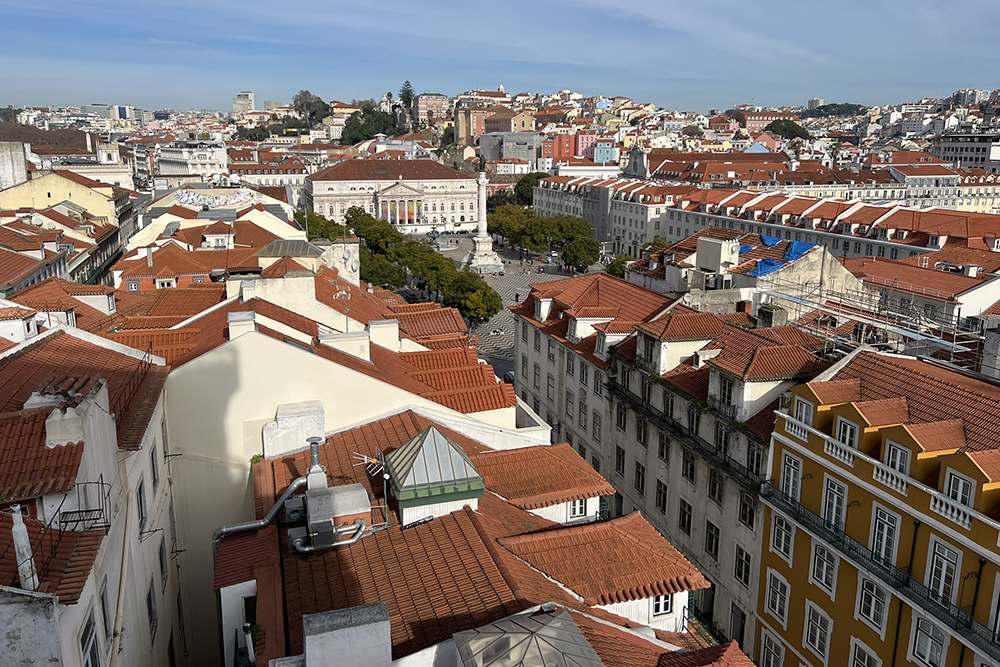
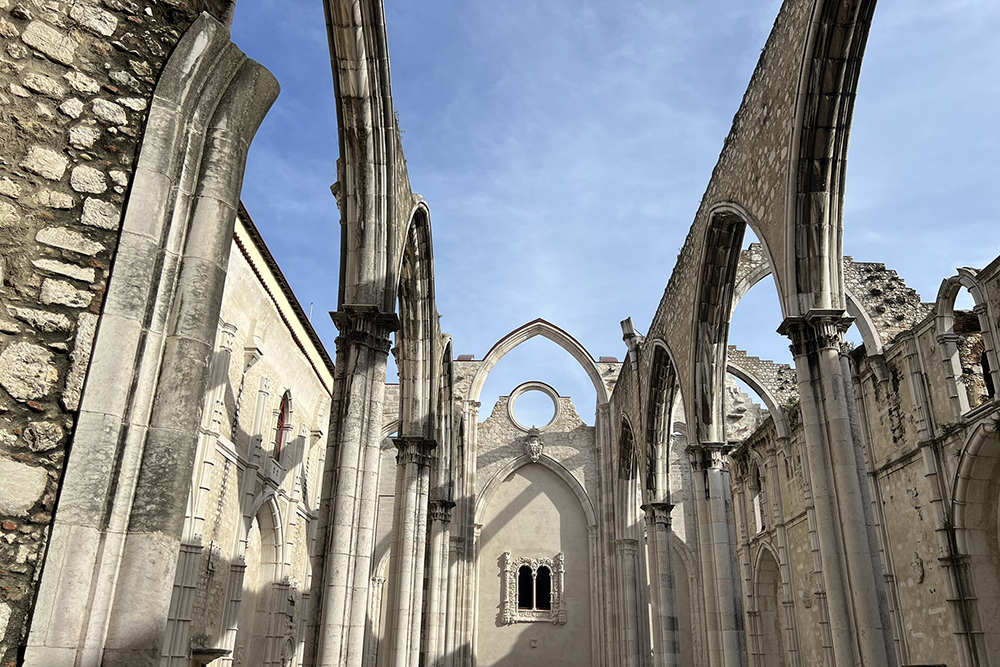
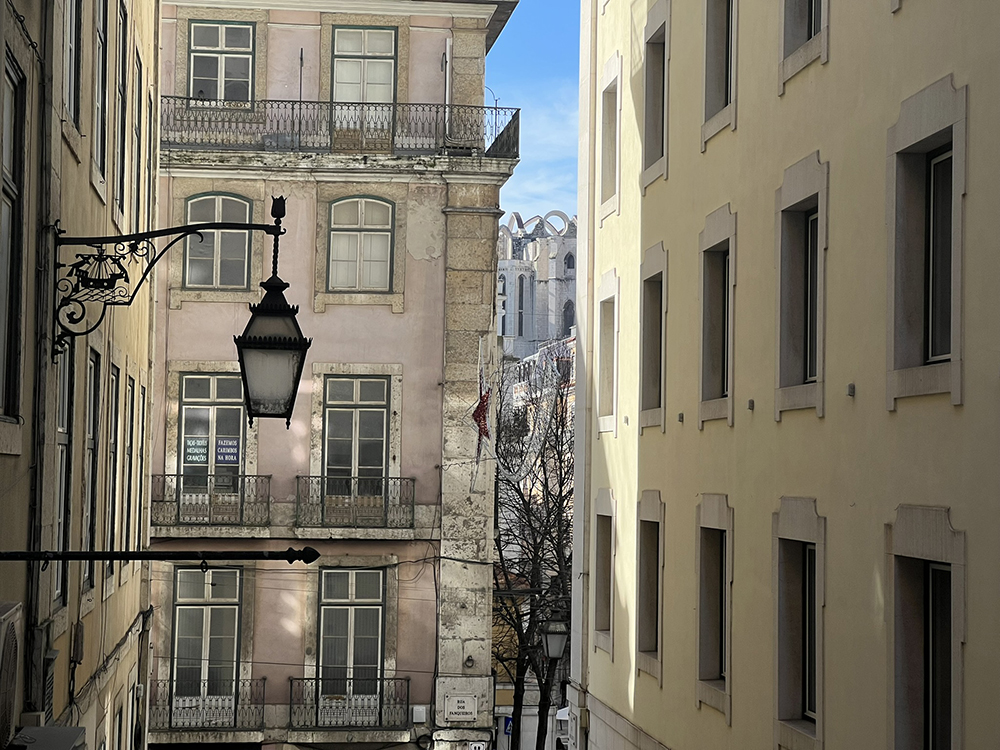
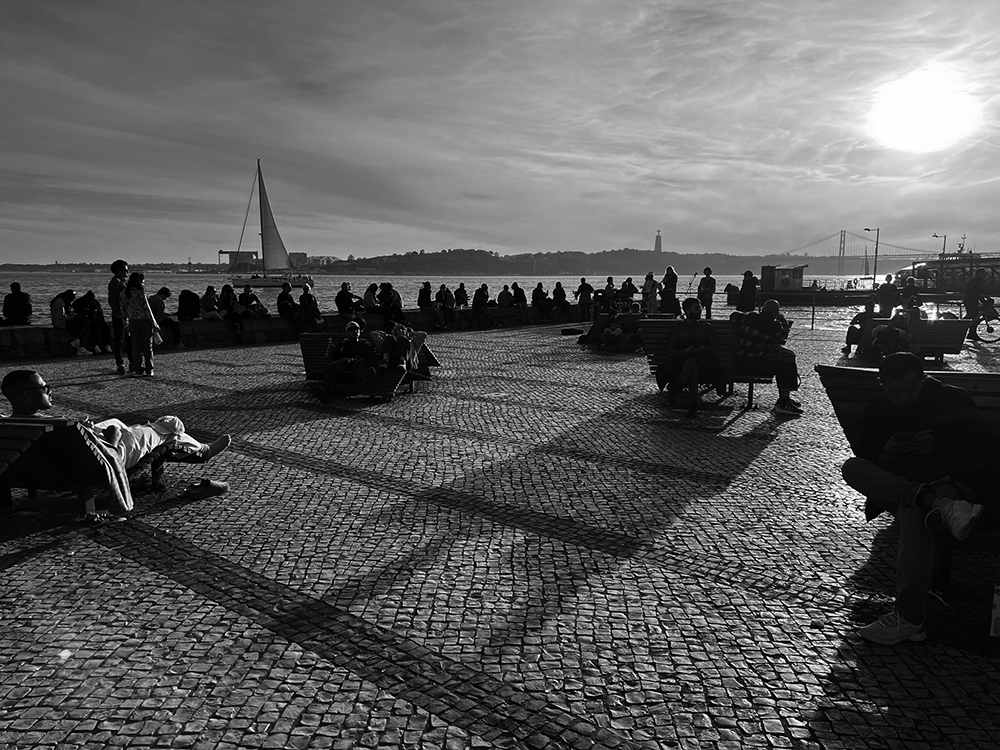
We set off for Lisbon at the end of January and were welcomed by a warming winter sun and clear blue skies. The objective of the study trip is to become immersed into the city, the people, the culture and specifically the public space, Carmo Terraces. The students spend the first part of their module researching the city and the space which then informs their concept design midway through the course. The study trip is therefore an opportunity to see the specific space, how it fits into the urban context, how people interact with the space and what are the challenges and opportunities in the space. There are also, of course, opportunities to explore wider across the city and visit parks, gardens and squares throughout the weekend. We took in the Amanda Levete’s practice AL_A designed MAAT Gallery, Castelo de San Jorge, Casa dos Bicos, Gulbenkian Foundation, and Cascais, to name but a few.
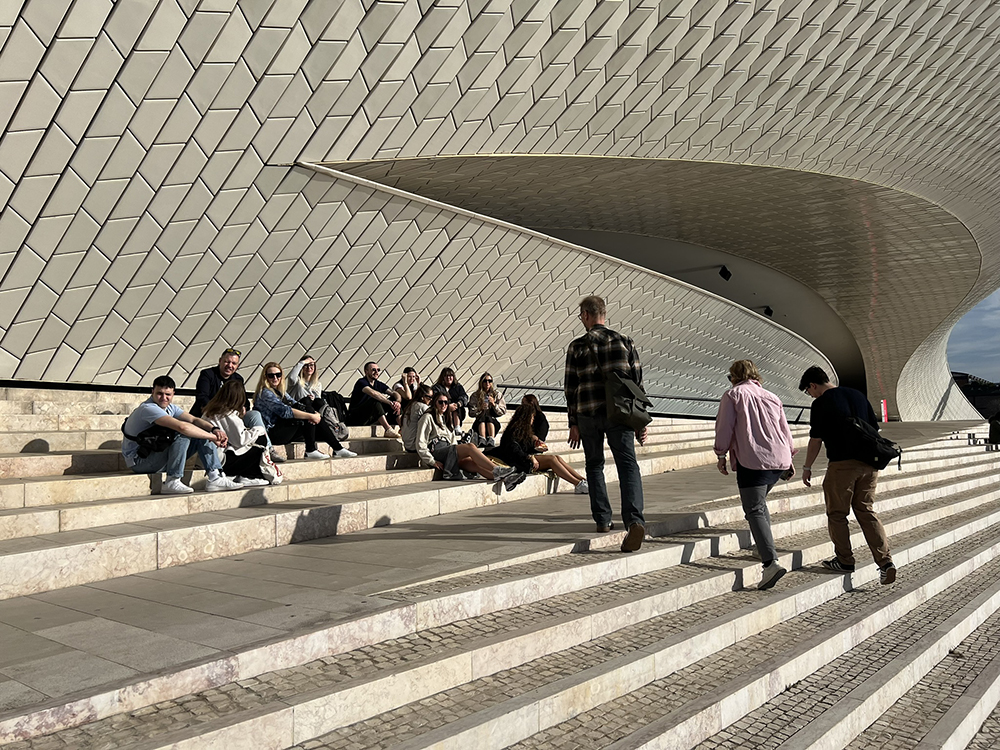
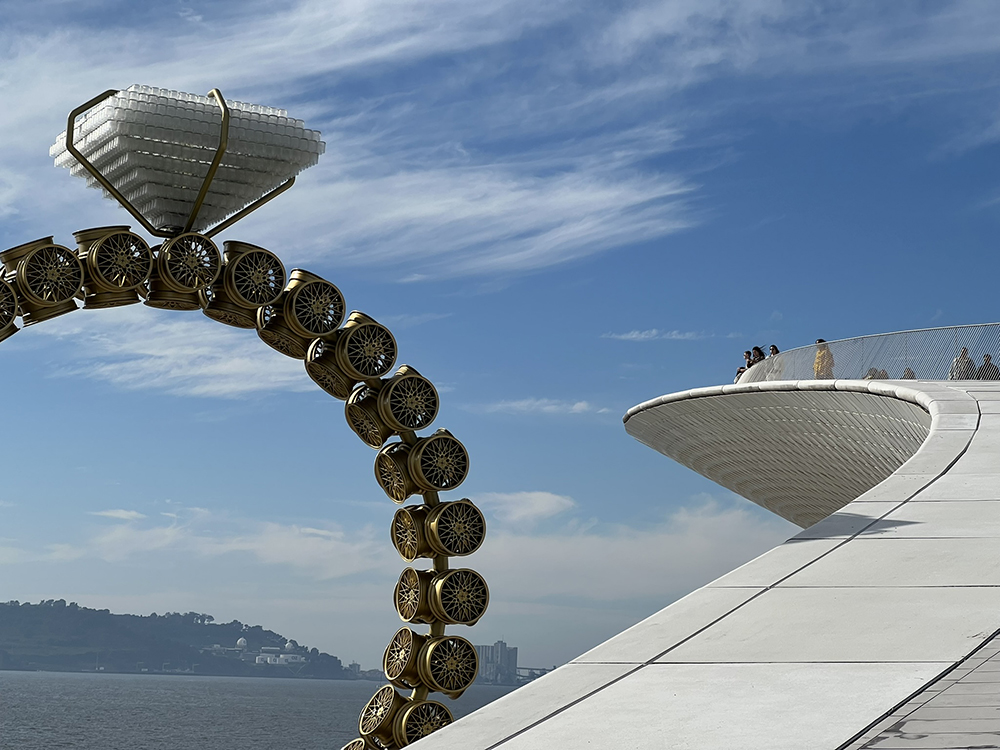
Lisbon is a city of contrasts; light and dark, intimate and grand, gritty and polished, steep and flat, colour and grayscale, historic and contemporary and, bustling and quiet, mixed with its cultural diversity it is a truly rich experience once immersed into the city life. By far the biggest challenge is the topography, hills and steep gradients in abundance, makes navigating the city difficult. Some clever ways to deal with this has been to introduce escalators, elevators and specially crafted trams levelled to the slopes.
Some of the best memories from our trip included the ginjinha, cherry brandy served in chocolate shot cups, seafood to die for, hills, trams, escalator streets, elevators, tiles, viewpoints, and beautiful colourful buildings climbing up the steep hills framing glimpse views across the city. Lisbon is a city of seven hills, much like Edinburgh, except that Lisbon is built on the hills and Edinburgh is typically built around the hills.
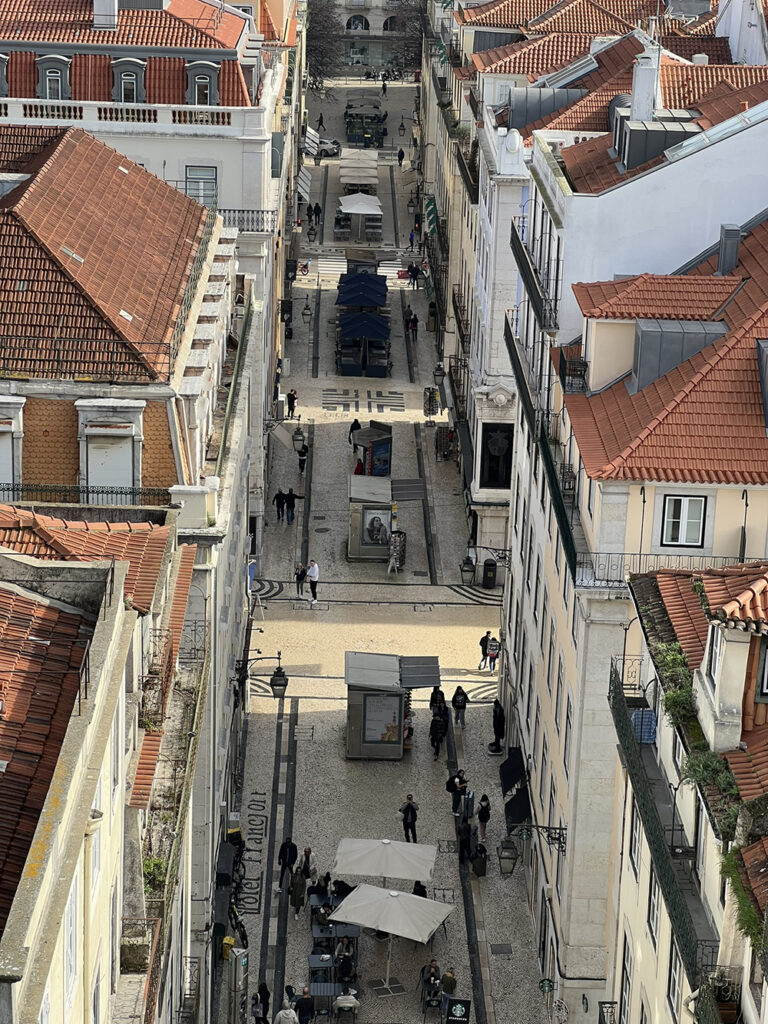
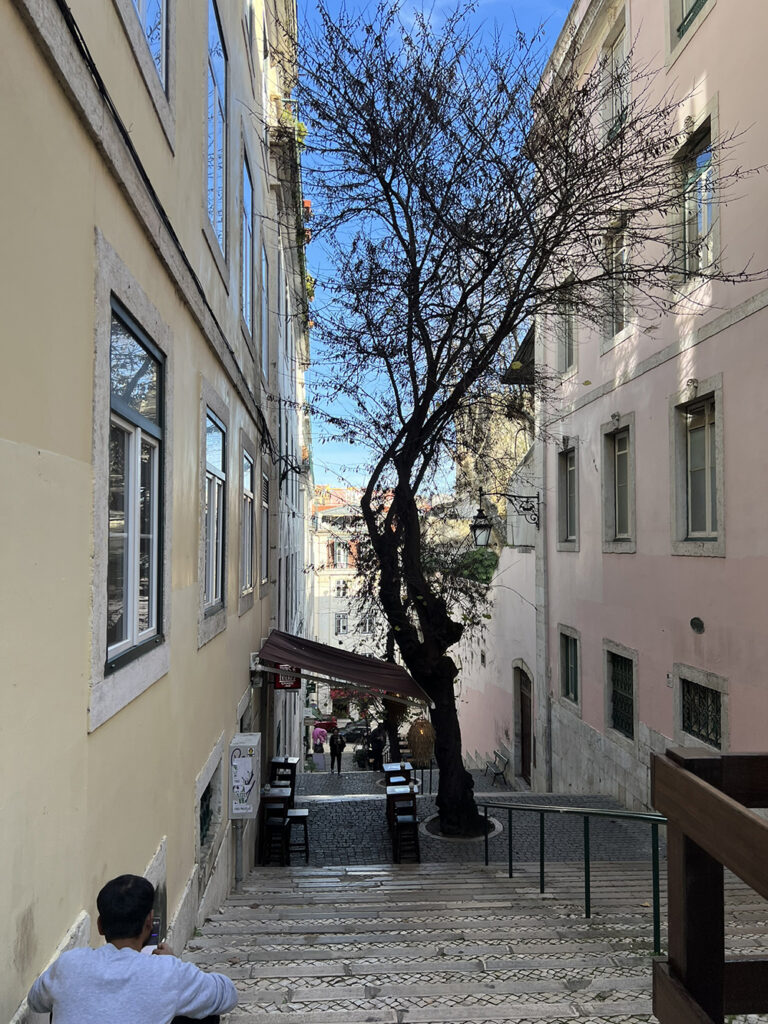
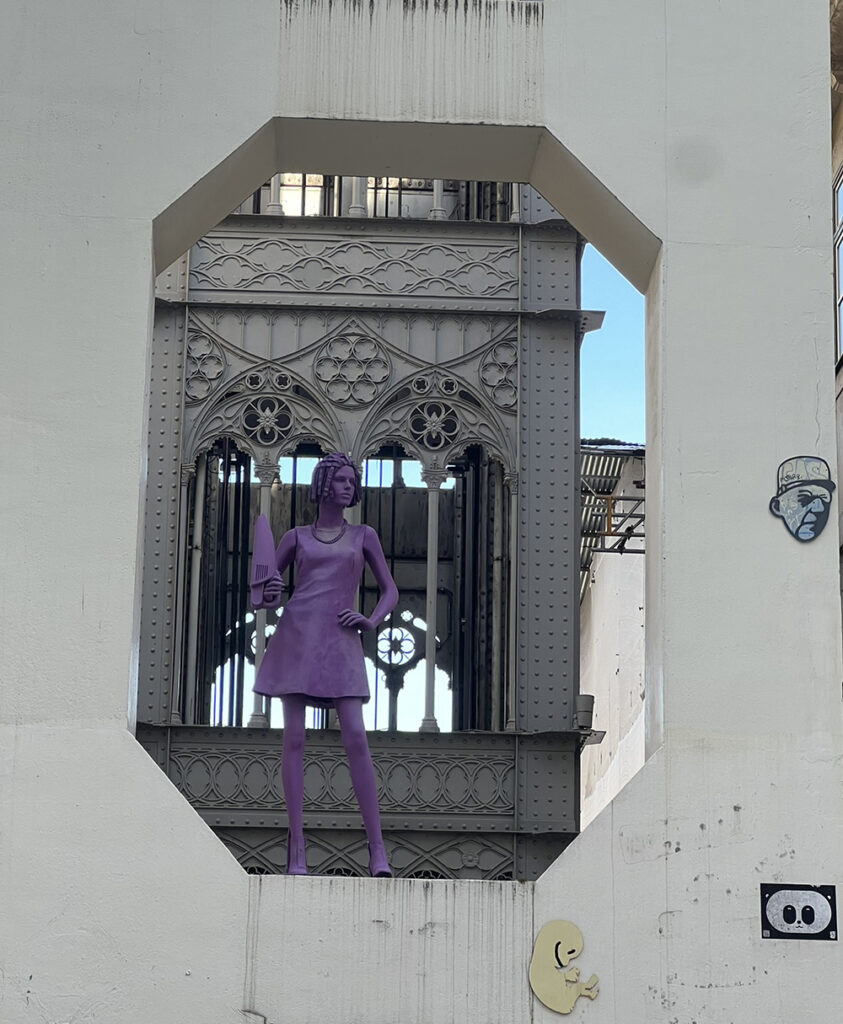
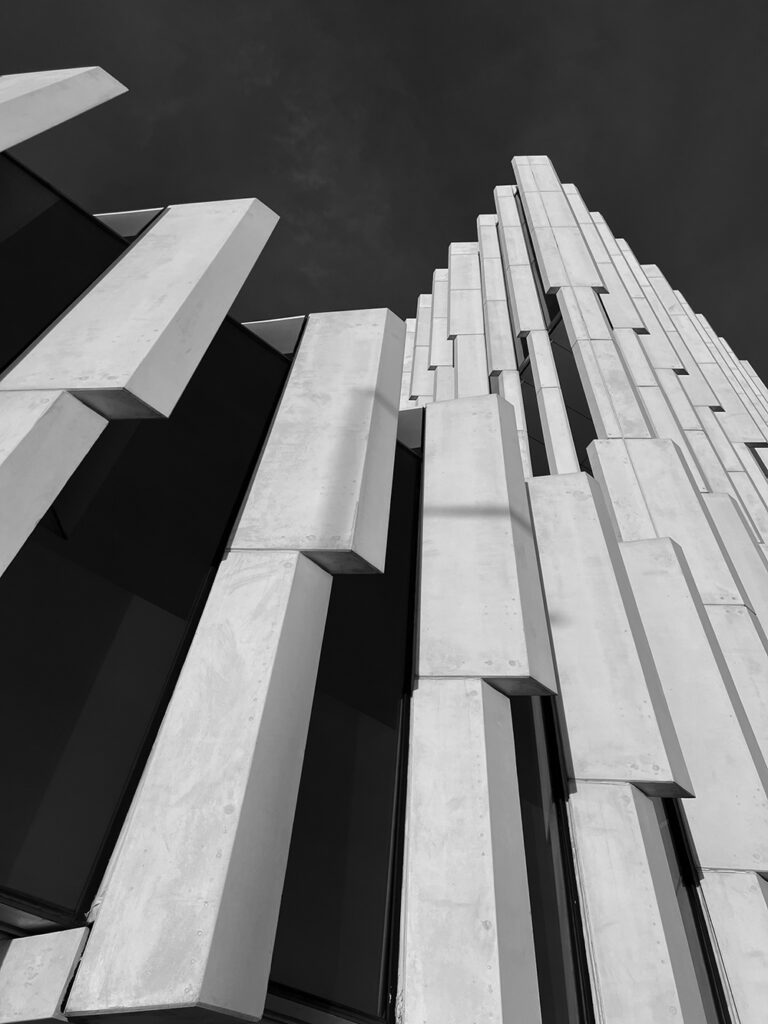
The study trip and the ongoing creative solutions that the students are currently producing has reinforced the value of such excursions. Study trips inspire creative solution focussed design, curiosity is sufficiently replete and results in interventions that are considered and sympathetic to their context. Looking forward to seeing the final design solutions in the next few weeks, our next trip in January 2025 with the students and HarrisonStevens’ study trip in September 2024.
